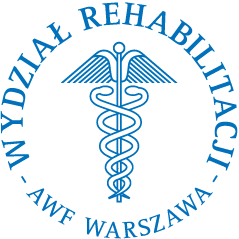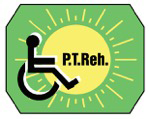


|
Current issue
Archive
Manuscripts accepted
About the journal
Editorial board
Reviewers
Abstracting and indexing
Contact
Instructions for authors
Publication charge
Ethical standards and procedures
Editorial System
Submit your Manuscript
|
2/2022
vol. 36 Original article
World Health Organization Disability Assessment Schedule 2.0: psychometric properties and validation of the Ukrainian version in a sample of cadets of the armed forces
Iuliia Pavlova
1
,
Ostap Muzyka
1
,
Kateryna Tymruk-Skoropad
1
1.
Lviv State University of Physical Culture, Ukraine
Advances in Rehabilitation, 2022, 36(2), 39–48
Online publish date: 2022/05/26
Article file
- 2022-02-ar-05-popr.pdf
[0.51 MB]
ENW EndNote
BIB JabRef, Mendeley
RIS Papers, Reference Manager, RefWorks, Zotero
AMA
APA
Chicago
Harvard
MLA
Vancouver
1. Stucki G, Bickenbach J. Functioning: the third health indicator in the health system and the key indicator for rehabilitation. Eur J Phys Rehabil Med. 2017; 53(1): 134-8. 2.
Ustün TB, Chatterji S, Kostansjek N, Bickenbach J. WHO’s ICF and functional status information in health records. Health Care Financ Rev. 2003; 24(3): 77-88. 3.
Ustun TB, Kostanjesek N, Chatterji S, Rehm J, edi-tors. Measuring health and disability: manual for WHO Disability Assessment Schedule ( WHODAS 2.0) . World Health Organization; 2010. 4.
Federici S, Bracalenti M, Meloni F, Luciano JV. World Health Organization disability assessment schedule 2.0: An international systematic review. Disabil Rehabil. 2017; 39(23): 2347-80. 5.
Igwesi-Chidobe CN, Kitchen S, Sorinola IO, Godfrey EL. World Health Organisation Disability Assessment Schedule (WHODAS 2.0): development and validation of the Nigerian Igbo version in patients with chronic low back pain. BMC Musculoskelet Disord. 2020; 21: 1-14. 6.
Weeks M, Garber BG, Zamorski MA. Disability and Mental Disorders in the Canadian Armed Forces. Can J Psychiatry. 2016; 61(1): 56-63. 7.
Denby E, Murphy D, Busuttil W, Sakel M, Wilkinson D. Neuropsychiatric Outcomes in UK Military Veter-ans With Mild Traumatic Brain Injury and Vestibular Dysfunction. J Head Trauma Rehabil. 2020; 35(1): 57-65. 8.
Herrold AA, Kletzel SL, Mallinson T, Pape TLB, Weaver JA, Guernon A, et al. Psychometric measure-ment properties of the world health organization disa-bility assessment schedule 2.0 (WHODAS) evaluated among veterans with mild traumatic brain injury and behavioral health conditions. Disabil Rehabil. 2021; 43(9): 1313-22. 9.
Schumm JA, Gore WL, Chard KM, Meyer EC. Ex-amination of the World Health Organization Disability Assessment System as a Measure of Disability Severity Among Veterans Receiving Cognitive Processing Therapy. J Trauma Stress. 2017; 30(6): 704-9. 10.
Marx BP, Wolf EJ, Cornette MM, Schnurr PP, Rosen MI, Friedman MJ, et al. Using the WHODAS 2.0 to Assess Functioning Among Veterans Seeking Compensation for Posttraumatic Stress Disorder. Psy-chiatr Serv. 2015; 66(12): 1312-7. 11.
behavioralhealth.nd.gov [Internet]. Human Service Zones Resources; c2022 [cited 2022 May 10]. Available from: https://www.behavioralhealth.nd.gov/ 12.
dhs.state.mn.us [Internet]. Diagnostic Assessment and Substance Use Screening; c2022 [cited 2022 May 10]. Available from: https://www.dhs.state.mn.us/ 13.
Mundfrom DJ, Shaw DG, Ke TL. Minimum Sample Size Recommendations for Conducting Factor Analyses. Int J of Testing. 2009; 5(2): 159-68. 14.
Ustün TB, Chatterji S, Kostanjsek N, Rehm J, Kennedy C, Epping-Jordan J, et al. Developing the World Health Organization Disability Assessment Schedule 2.0. Bull World Health Organ. 2010; 88(11): 815-23. 15.
Gandek B, Sinclair SJ, Kosinski M, Ware JE Jr. Psychometric evaluation of the SF-36 health survey in Medicare managed care. Health Care Financ Rev. 2004; 25(4): 5-25. 16.
Feshchenko YI, Mostovoy YM, Babiychuk YV. The procedure of adaptation of international quality of life questionnaire MOS SF-36 in Ukraine. The experience of administration in asthma patients. Ukr Pulm J. 2002; 3: 9-11. 17.
Stein MB, Rothbaum BO. 175 years of progress in PTSD therapeutics: Learning from the past. Am J Psychiatry. 2018; 175(6): 508-16. 18.
Peterson RA, Kim Y. On the relationship between coefficient alpha and composite reliability. J Appl Psychol 2013; 98: 194-8. 19.
Shemwell JT, Chase CC, Schwartz DL. Seeking the general explanation: A test of inductive activities for learning and transfer. J Res Sci Teach 2014; 52: 58-83. 20.
zakon.rada.gov.ua [Internet]. Order of the Ministry of Defense of Ukraine: On approval of the Instruction on physical training in the system of the Ministry of De-fense of Ukraine; c2022 [cited 2022 May 10]. Avail-able from: https://zakon.rada.gov.ua/ 21.
Hu LT, Bentler PM. Cutoff criteria for fit indexes in covariance structure analysis: Conventional criteria versus new alternatives. Struct Equ Modeling: A Multidisc J. 2009; 6: 1-55. 22.
He J, Van De Vijver F. Bias and Equivalence in Cross-Cultural Research. Online Readings Psychol Cult. 2012; 2: 1-8. 23.
bbc.com [Internet]. Up to 3,000 Ukrainian servicemen died in the war with Russia – Zelensky; c2022 [cited 2022 May 16]. Available from: https://www.bbc.com/ 24.
data2.unhcr.org [Internet]. Ukraine Refugees Situation; c2022 [cited 2022 May 16]. Available from: https://www.data2.unhcr.org/ 25.
Chang KH, Liao HF, Yen CF, Hwang AW, Chi WC, Escorpizo R, et al. Association between muscle power impairment and WHODAS 2.0 in older adults with physical disability in Taiwan. Disabil Rehabil 2015; 37: 712-20. 26.
Zhao HP, Liu Y, Li HL, Ma L, Zhang YJ, Wang J. Activity limitation and participation restrictions of breast cancer patients receiving chemotherapy: psychometric properties and validation of the Chinese version of the WHODAS 2.0. Qual Life Res 2013; 22: 897-906. 27.
Risal A, Kunwar D, Karki E, Adhikari S, Bimali I, Shrestha B, et al. Adapting World Health Organization Disability Assessment Schedule 2.0 for Nepal. BMC Psychology. 2021; 9(1): 1-10. 28.
Hu L, Zang YL, Li N. The applicability of WHODAS 2.0 in adolescents in China. J Clin Nurs 2012; 21: 2438-51. 29.
Midhage R, Hermansson L, Söderberg P, Tungström S, Nordenskjöld A, Svanborg C, et al. Psychometric evaluation of the Swedish self-rated 36-item version of WHODAS 2.0 for use in psychiatric populations – using classical test theory. Nord J Psychiatry 2021; 75: 494-501. 30.
Silveira C, Parpinelli MA, Pacagnella RC, Andreucci CB, Angelini CR, Ferreira EC, et al. Validation of the 36-item version of the WHO Disability Assessment Schedule 2.0 (WHODAS 2.0) for assessing women’s disability and functioning associated with maternal morbidity. Rev Bras Ginecol Obstet 2017; 39: 44-52. 31.
Kirchberger I, Braitmayer K, Coenen M, Oberhauser C, Meisinger C. Feasibility and psychometric properties of the German 12-item WHO Disability Assessment Schedule (WHODAS 2.0) in a population-based sample of patients with myocardial infarction from the MONICA/KORA myocardial infarction registry. Popul Health Metr. 2014;12(1): 1-13. 32.
Sri Y, Muslih M, Sim J, Vidyanti A, Brahmadhi A, Tsai H. Development and validation of the World Health Organization disability Assessment Schedule 2.0 (WHODAS 2.0) Indonesian version in stroke survivors. Disabil Rehabil. 2021; 21: 1-8. 33.
Brasil A, Brasil F, Maurício A, Vilela R. Cross-cultural adaptation and validation to Brazil of the Obesity-related Problems Scale Einstein (Săo Paulo). 2017; 15(3): 327-33. 34.
Aslan Kunt D, Dereboy F. Validity and Reliability of the World Health Organization Disability Assessment Schedule 2.0 (WHODAS 2.0) in Turkish Psychiatry Patients and Healthy Controls. Turkish J Psychiatry. 2018; 29: 248-57. 35.
Salehi R, Negahban H, Khiavi FF, Saboor S, Majdinasab N, Shakhi K. Validity and Reliability of the World Health Organization Disability Assessment Schedule 2.0 36-Item Persian Version for Persons with Multiple Sclerosis. Korean J Fam Med. 2020; 41: 195-201. 36.
Ćwirlej-Sozańska A, Bejer A, Wiśniowska-Szurlej A, Wilmowska-Pietruszyńska A, Sire A, Spalek R, et al. Psychometric Properties of the Polish Version of the 36-Item WHODAS 2.0 in Patients with Low Back Pain. Int J Environ Res Public Health. 2020; 17: 1-17. 37.
Huang S, Chang K, Escorpizo R, Chang F, Liou T. WHODAS 2.0 Can Predict Institutionalization among Patients with Traumatic Brain Injury. Int J Environ Res Public Health. 2019; 16(9): 1-9. 38.
Bejer A, Ćwirlej-Sozańska A, Wiśniowska-Szurlej A, Spalek R, Sire A, Sozański B. Psychometric properties of the Polish version of the 36-item WHODAS 2.0 in patients with hip and knee osteoarthritis. Qual Life Res. 2021; 30: 2415-27. 39.
Terwee CB, Bot SD, de Boer MR, van der Windt DA, Knol DL, Dekker J, et al. Quality criteria were proposed for measurement properties of health status questionnaires. J Clin Epidemiol. 2007; 60(1): 34-42. 40.
Streiner DL. Figuring Out Factors: The Use and Misuse of Factor Analysis. The Canad J of Psychiatry. 1994; 39(3): 135-40. 41.
Chiu TY, Yen CF, Chou CH, Lin JD, Hwang AW, Liao HF, et al. Development of traditional Chinese version of World Health Organization disability assessment schedule 2.0 36-item (WHODAS 2.0) in Taiwan: validity and reliability analyses. Res Dev Disabil. 2014; 35(11): 2812-20. 42.
Silveira C, Parpinelli MA, Pacagnella RC, Camargo RS, Costa ML, Zanardi DM, et al. Cross-cultural adaptation of the World Health Organization Disability Assessment Schedule (WHODAS 2.0) into Portuguese. Rev Assoc Med Bras. 2013; 59(3): 234-40. 43.
Gaskin CJ, Lambert SD, Bowe SJ, Orellana L. Why sample selection matters in exploratory factor analysis: implications for the 12-item World Health Organization Disability Assessment Schedule 2.0. BMC Med Res Methodol. 2017; 17(1): 1-40.
This is an Open Access journal, all articles are distributed under the terms of the Creative Commons Attribution-NonCommercial-ShareAlike 4.0 International (CC BY-NC-SA 4.0). License (http://creativecommons.org/licenses/by-nc-sa/4.0/), allowing third parties to copy and redistribute the material in any medium or format and to remix, transform, and build upon the material, provided the original work is properly cited and states its license.
|
    |